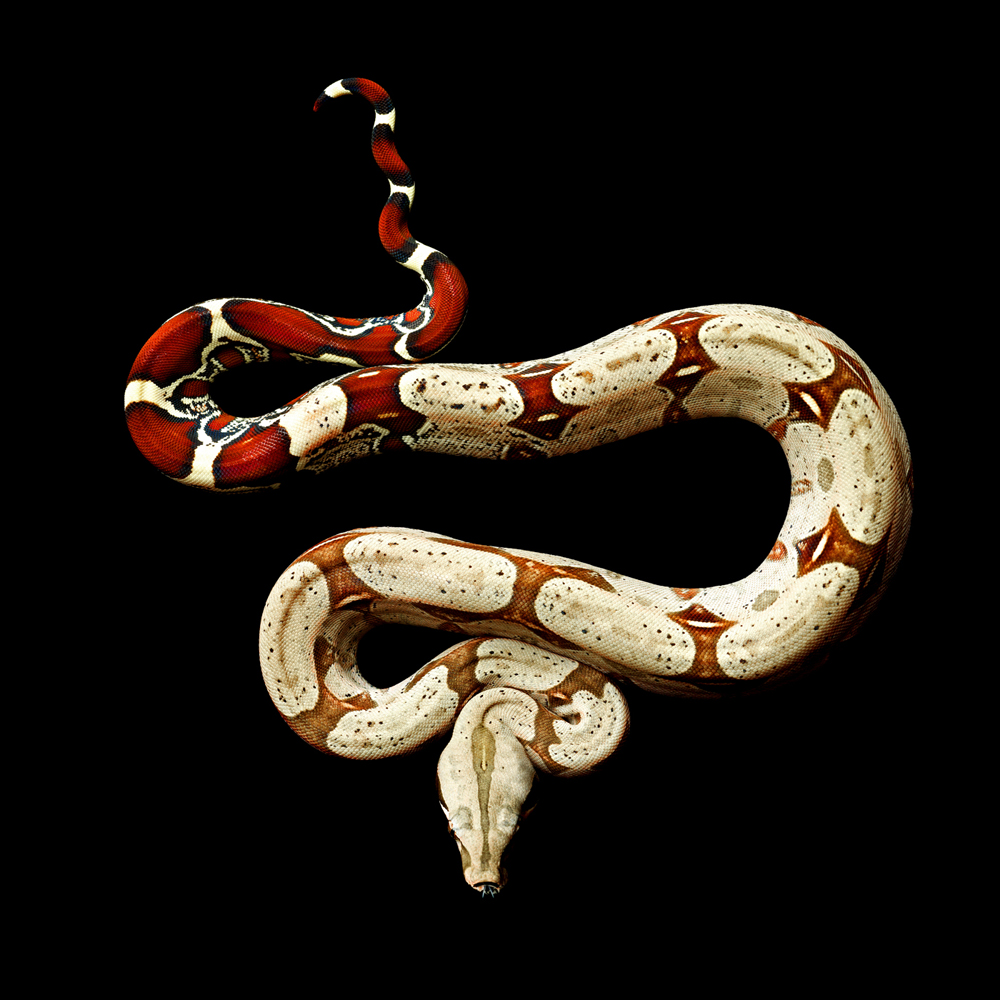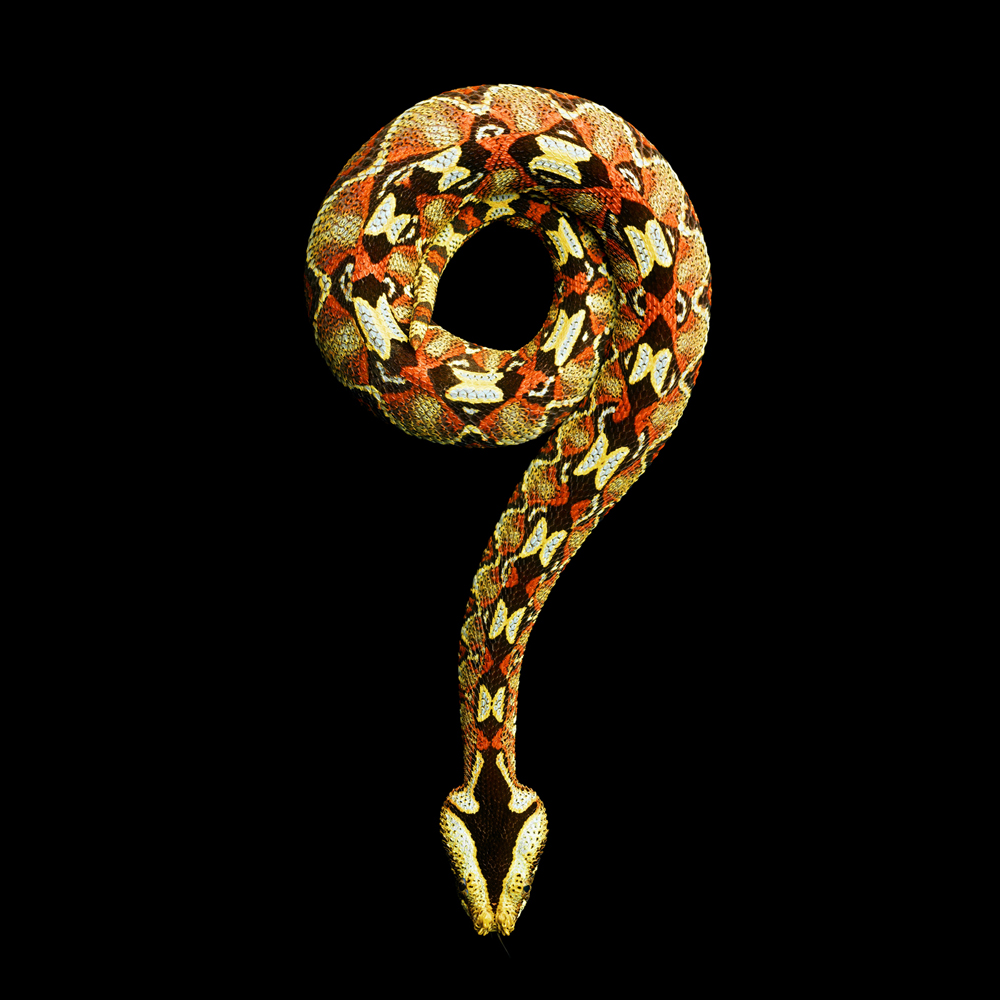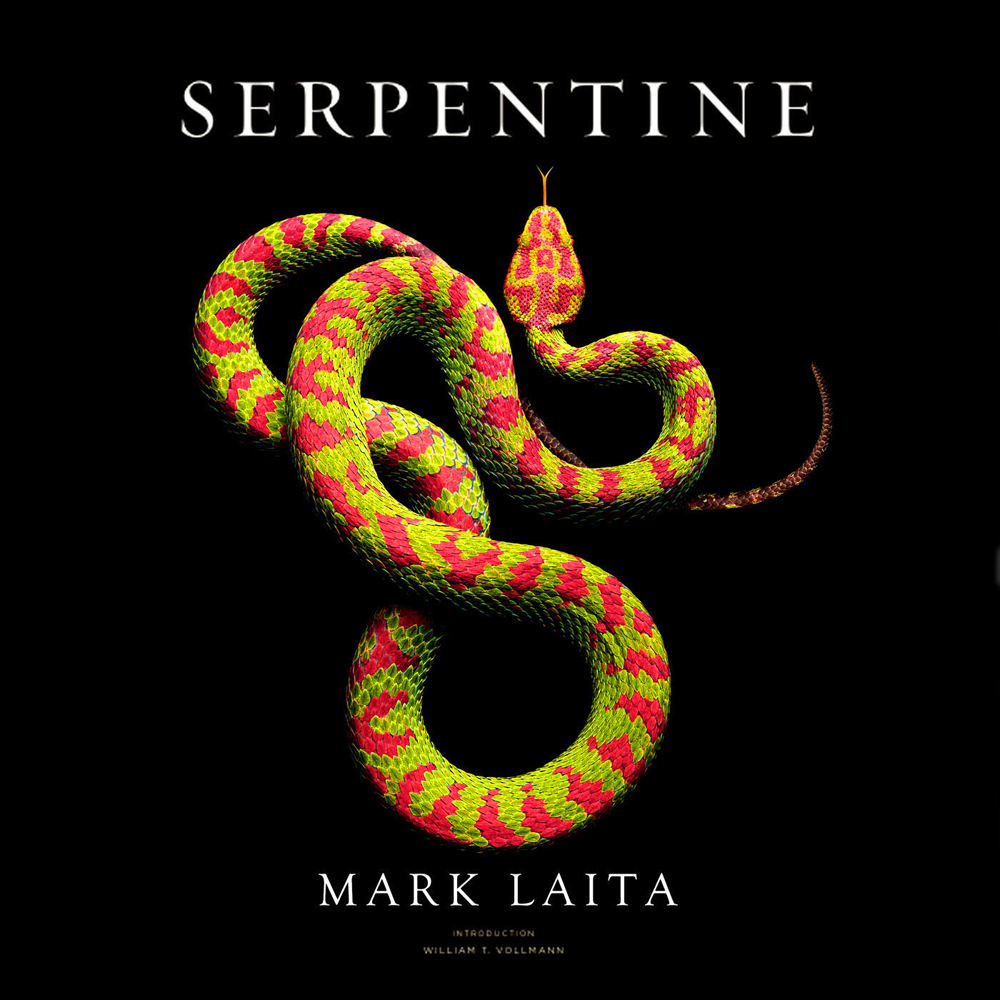Precarious
Well-known member
Mark Laita is not a snake owner or enthusiast but his admiration of snakes’ textures and formal qualities rivals that of any herpetologist. It’s an admiration that is on display in his new book, Serpentine, out next week. The book is a collection of gorgeously lit snakes against a black backdrop.
“My intention was to explore color, shape and movement, using snakes as a subject, but of course herpetologists will probably enjoy these photographs as well,” says Laita, a Los Angeles photographer known for his stunning studio compositions.
During the making of Serpentine, Laita visited dozens of locations in the U.S. and Central America essentially exporting his studio to zoos, venom labs and to the home and workplaces of breeders and collectors.
“I shot everything from the most venomous — an Inland Taipan — to a harmless garter snake,” says Laita. “As for the most dangerous, though, I would think a king cobra is the most capable of doing serious harm to a human. Very big, fast and angry.”
The king cobra is the world’s longest venomous snake and chiefly feeds on other snakes. Despite relying on the help of trained snake handlers, Laita didn’t complete Serpentine unscathed.
“I was bitten a few times by non-venomous species,” chirps Laita. “I had one venomous bite, but I’m still around.”
The book Serpentine goes on sale Feb. 26.
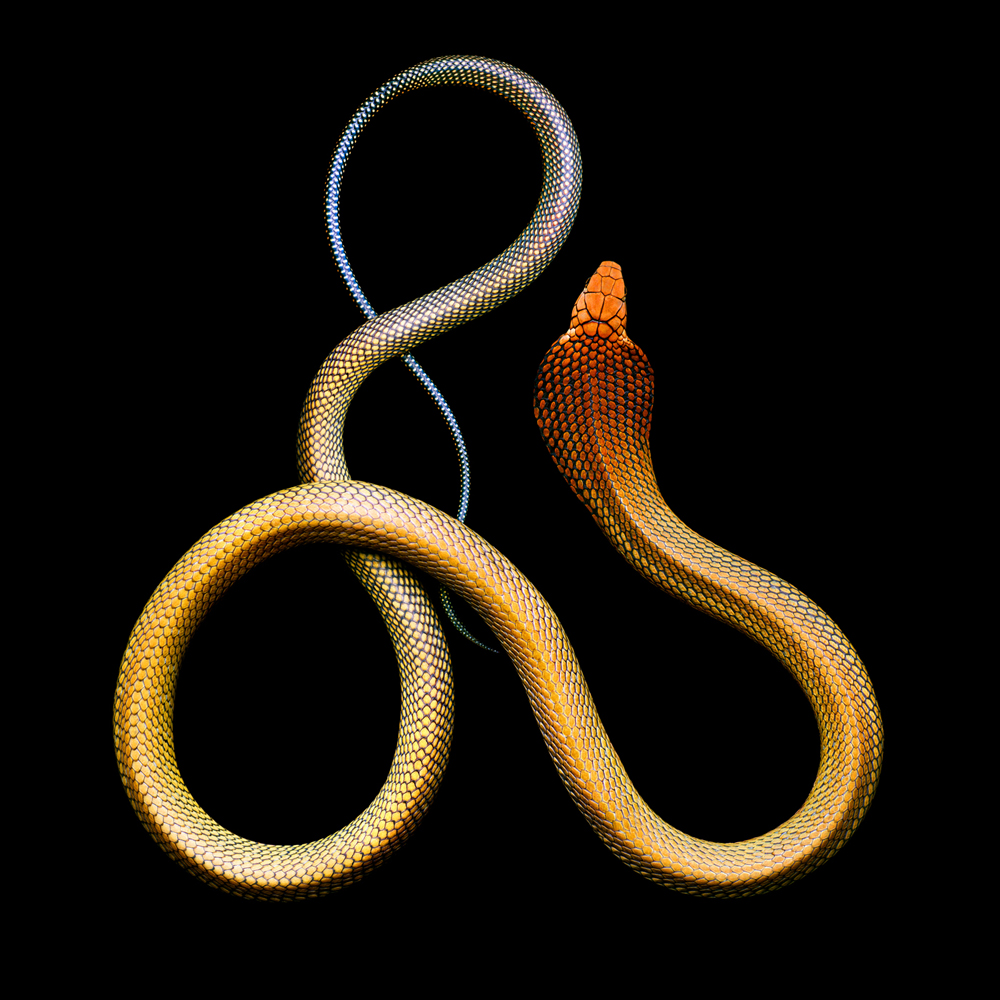
Ophiophagus hannah, commonly called the king cobra

Calliophis bivirgatus, commonly called the Blue Malaysian coral snake

Crotalus atrox (albino), commonly called the western diamondback rattlesnake
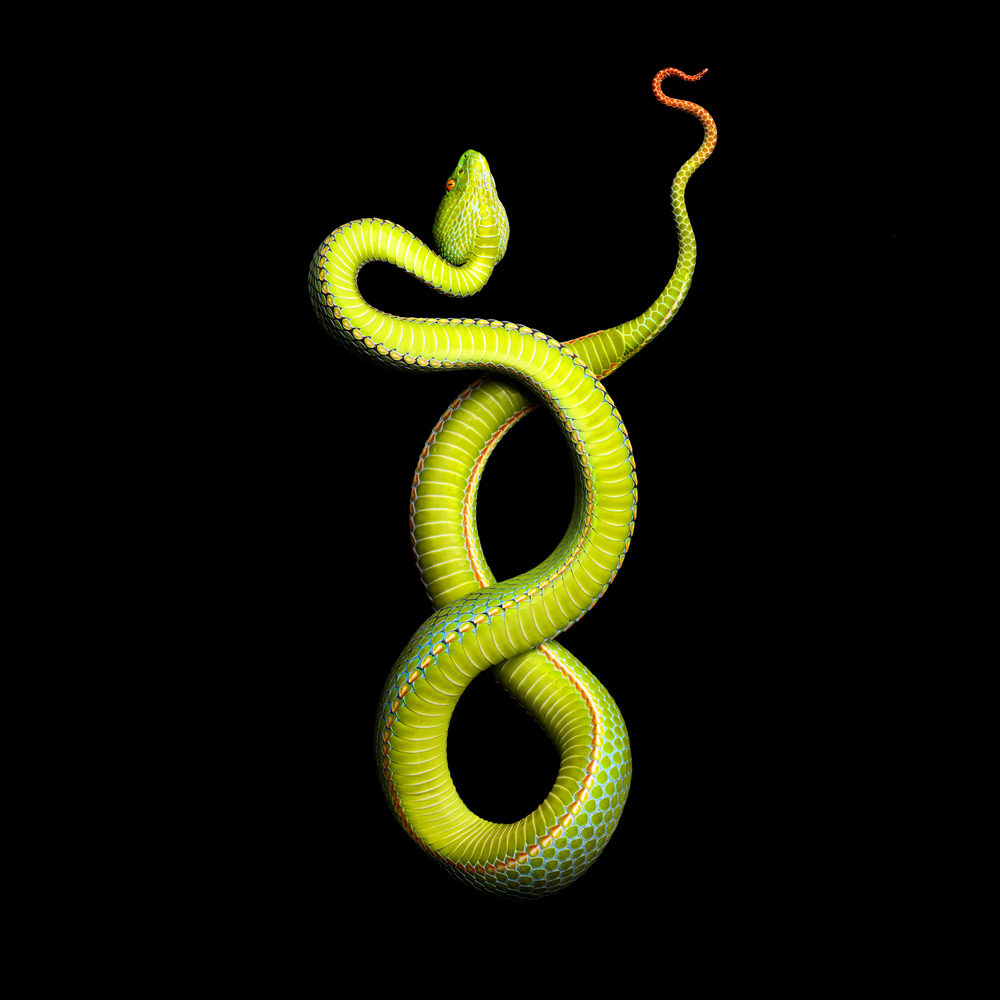
Trimeresurus vogeli, commonly called Vogel's pit viper, playing dead
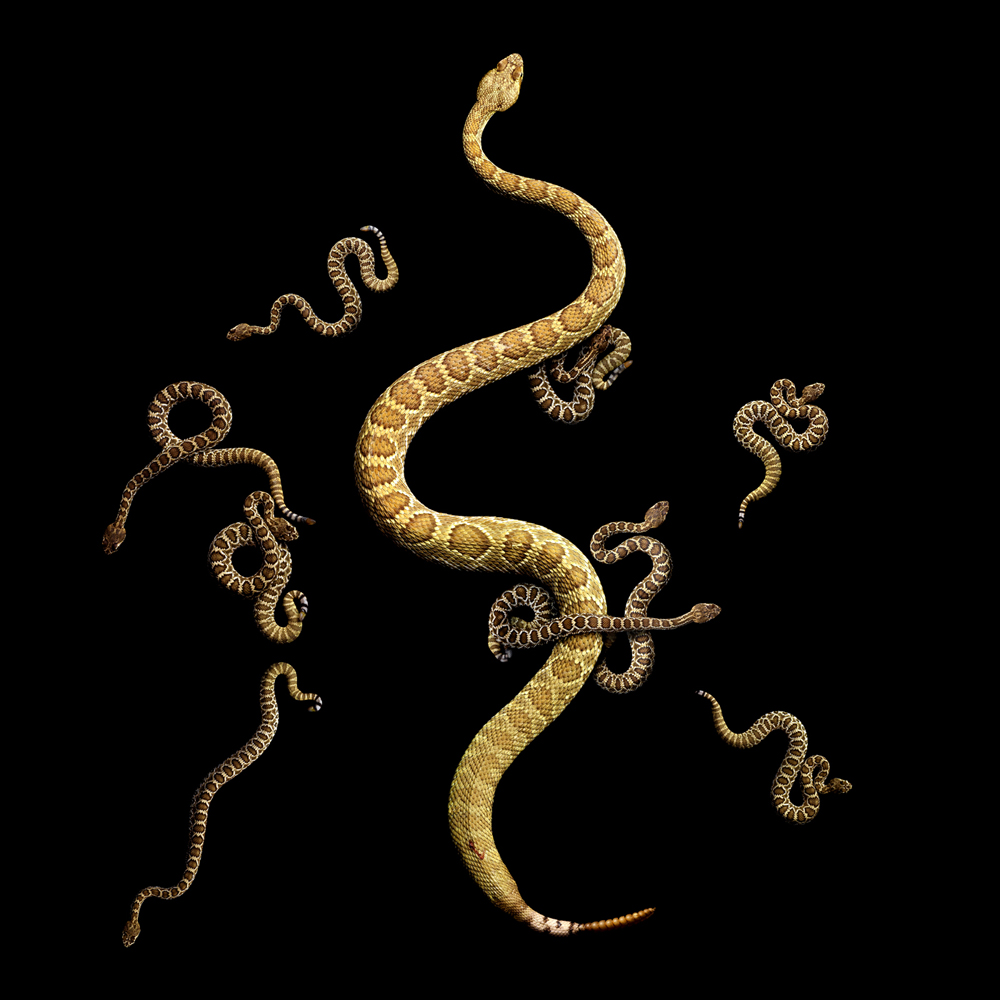
Crotalus scutulatus, commonly called the Mojave rattlesnake, with babies
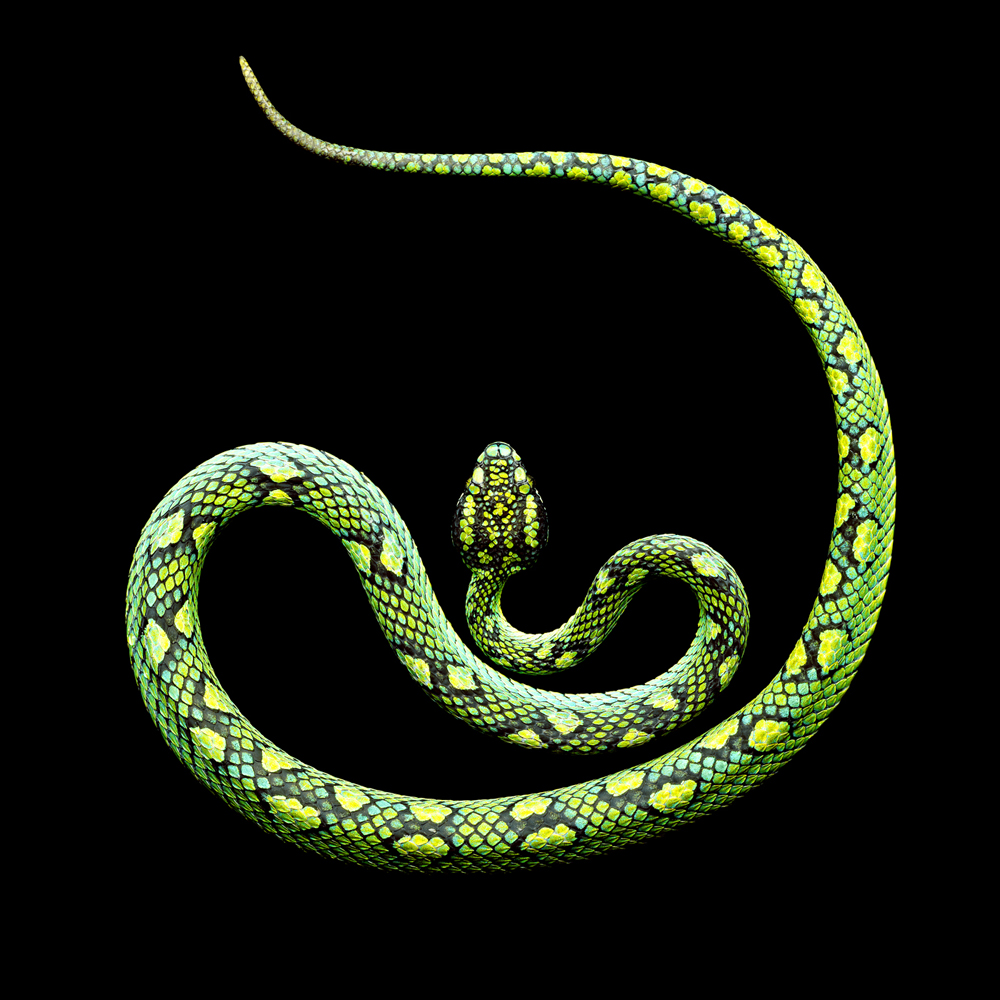
Trimeresurus trigonocephalus, commonly called the Sri Lankan palm viper
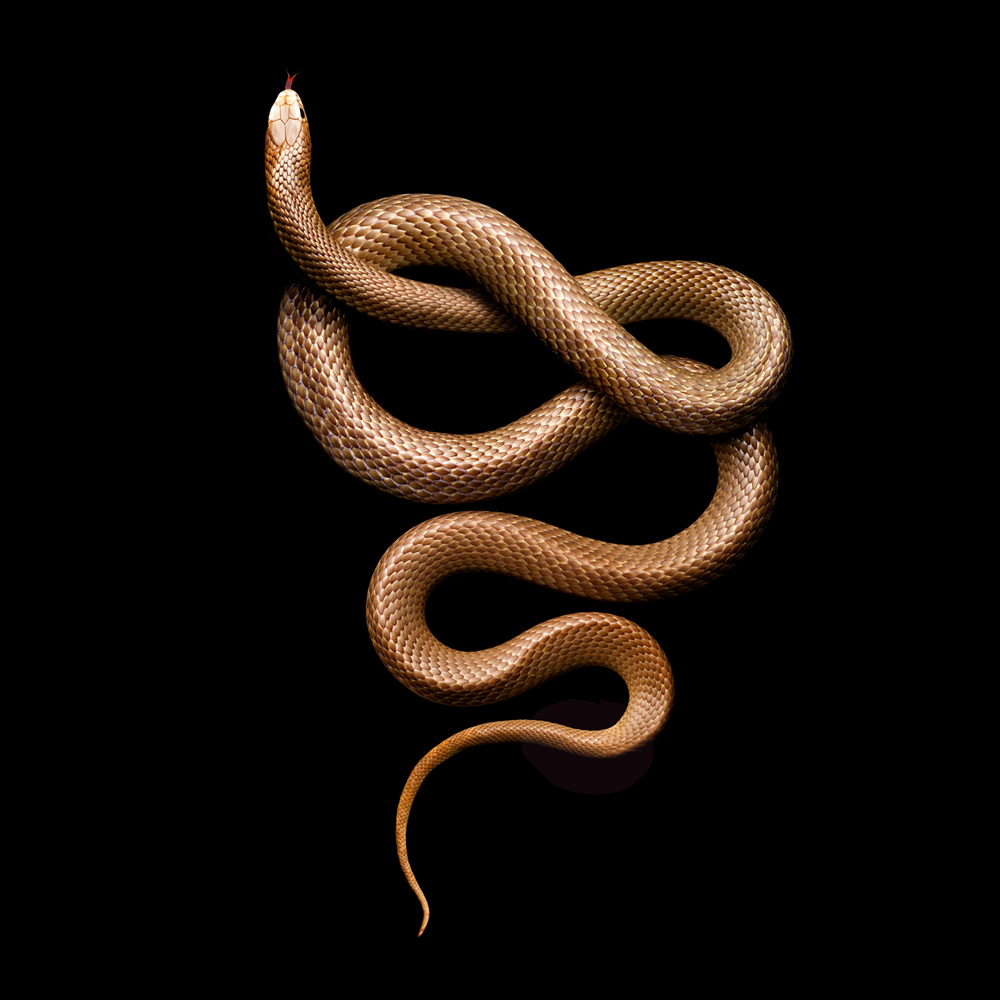
Pseudonaja textilis, commonly called the eastern brown snake

Lampropeltis getula nigrita, commonly called the Mexican black king snake
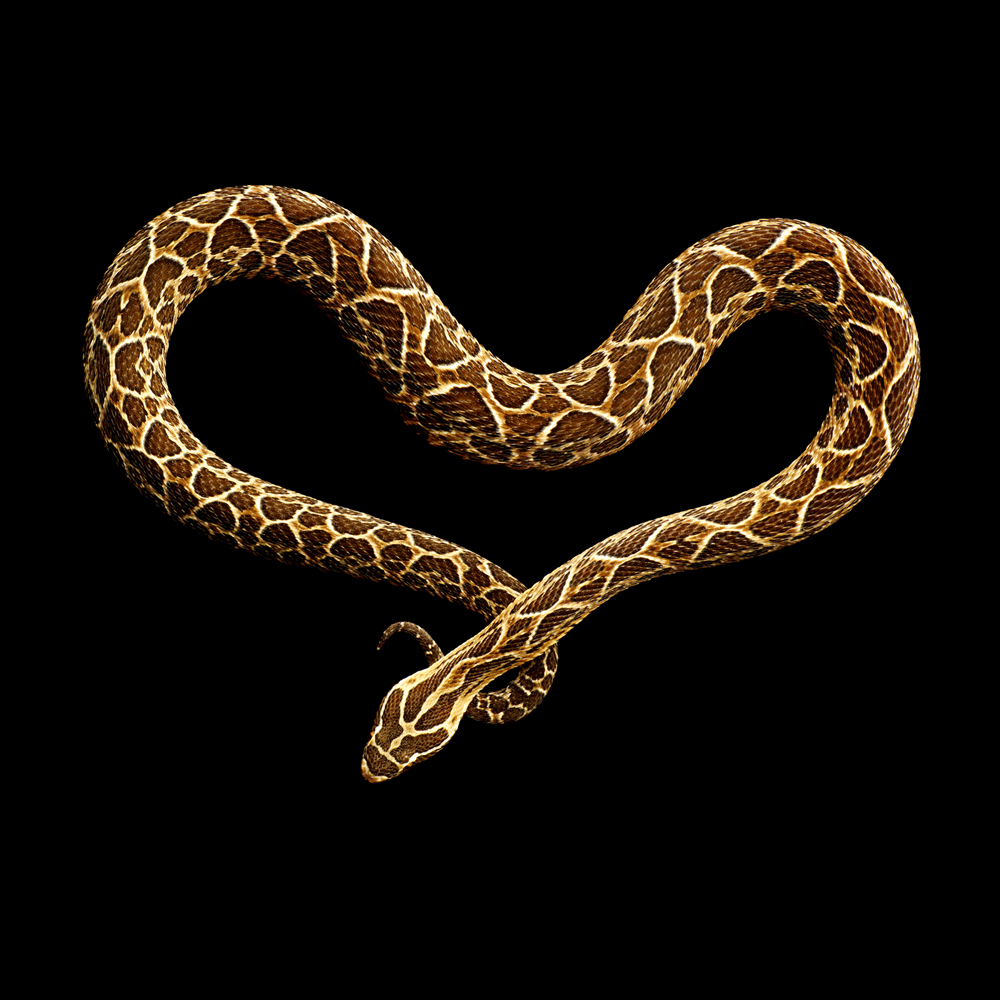
Bothrops alternatus, commonly called Urutu
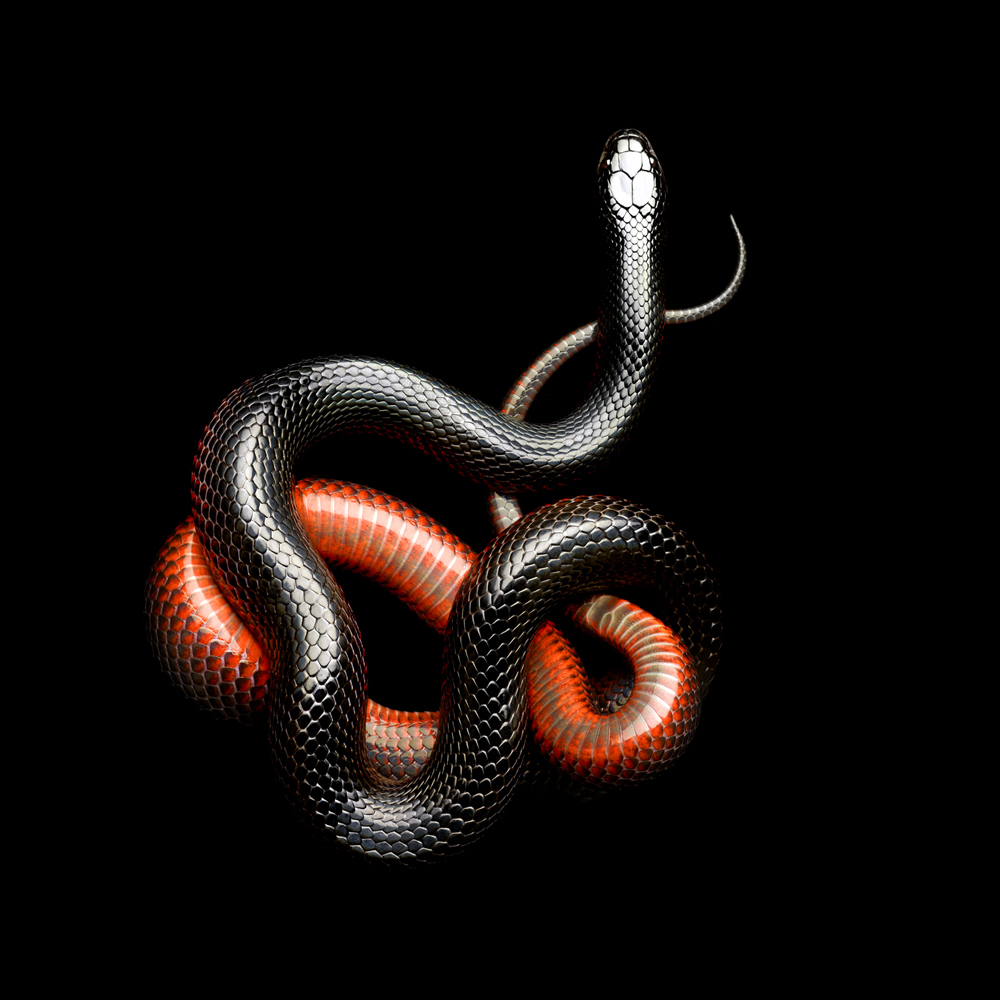
Cielia Cielia, commonly called Mussarana
“My intention was to explore color, shape and movement, using snakes as a subject, but of course herpetologists will probably enjoy these photographs as well,” says Laita, a Los Angeles photographer known for his stunning studio compositions.
During the making of Serpentine, Laita visited dozens of locations in the U.S. and Central America essentially exporting his studio to zoos, venom labs and to the home and workplaces of breeders and collectors.
“I shot everything from the most venomous — an Inland Taipan — to a harmless garter snake,” says Laita. “As for the most dangerous, though, I would think a king cobra is the most capable of doing serious harm to a human. Very big, fast and angry.”
The king cobra is the world’s longest venomous snake and chiefly feeds on other snakes. Despite relying on the help of trained snake handlers, Laita didn’t complete Serpentine unscathed.
“I was bitten a few times by non-venomous species,” chirps Laita. “I had one venomous bite, but I’m still around.”
The book Serpentine goes on sale Feb. 26.

Ophiophagus hannah, commonly called the king cobra

Calliophis bivirgatus, commonly called the Blue Malaysian coral snake

Crotalus atrox (albino), commonly called the western diamondback rattlesnake

Trimeresurus vogeli, commonly called Vogel's pit viper, playing dead

Crotalus scutulatus, commonly called the Mojave rattlesnake, with babies

Trimeresurus trigonocephalus, commonly called the Sri Lankan palm viper

Pseudonaja textilis, commonly called the eastern brown snake

Lampropeltis getula nigrita, commonly called the Mexican black king snake

Bothrops alternatus, commonly called Urutu

Cielia Cielia, commonly called Mussarana





